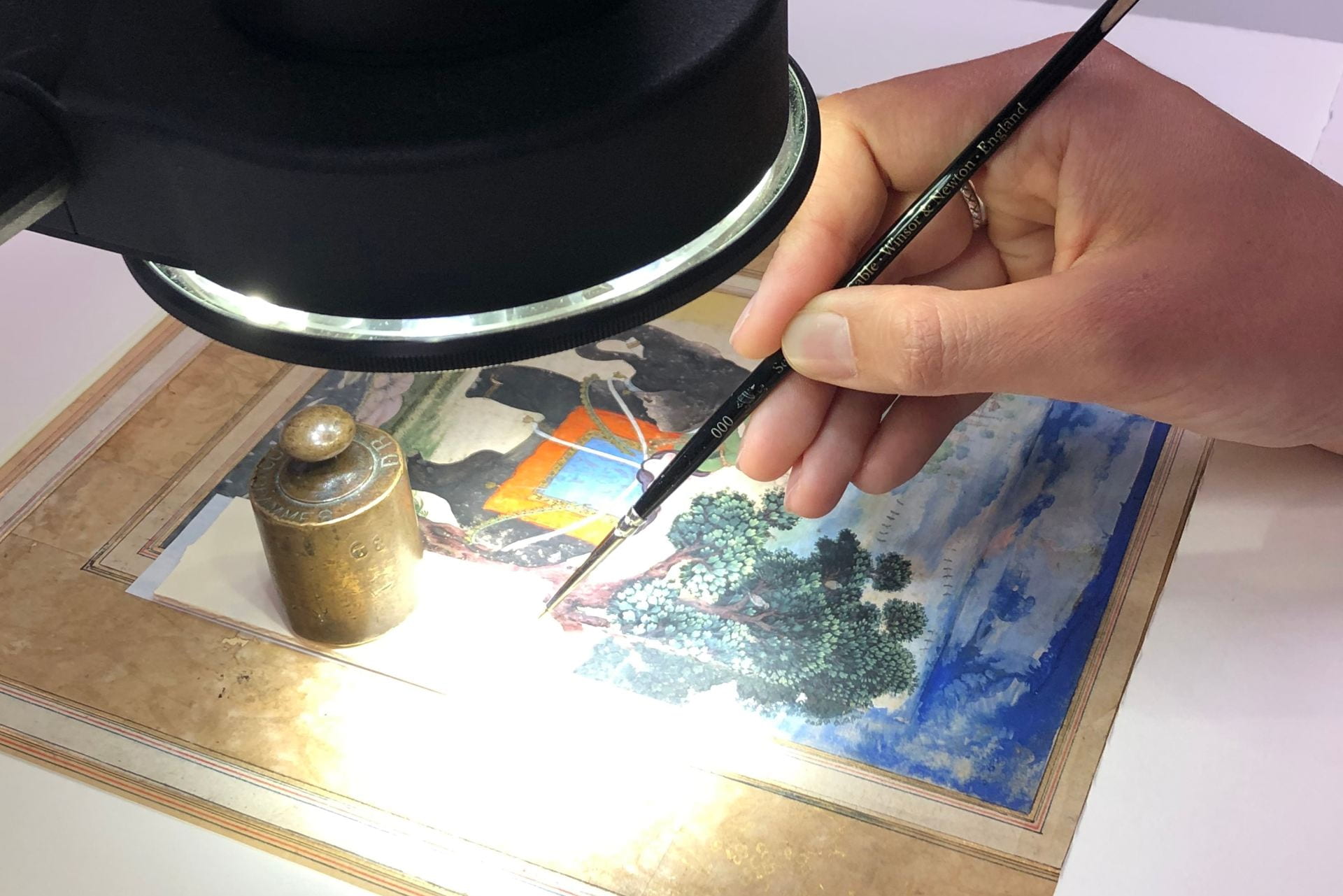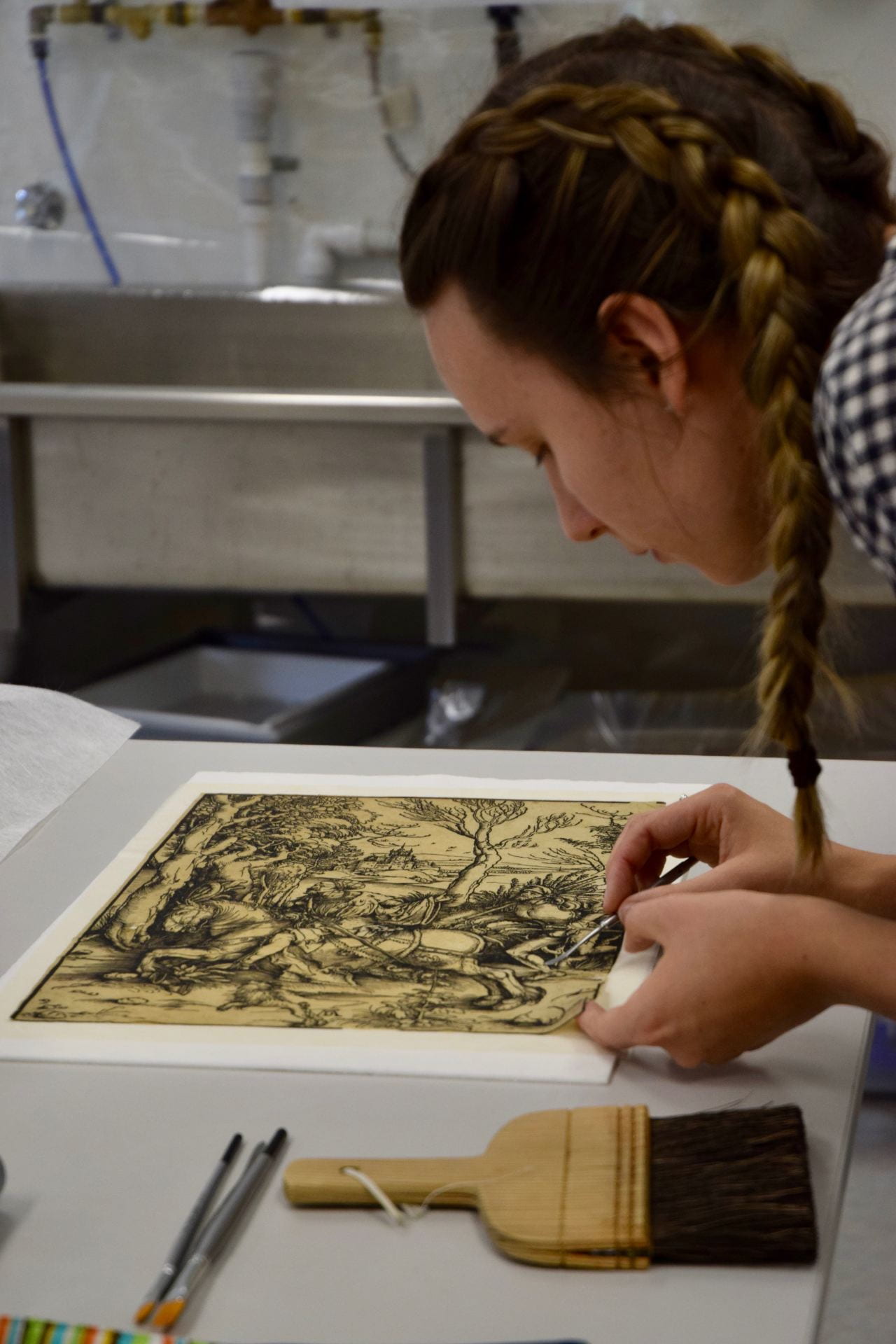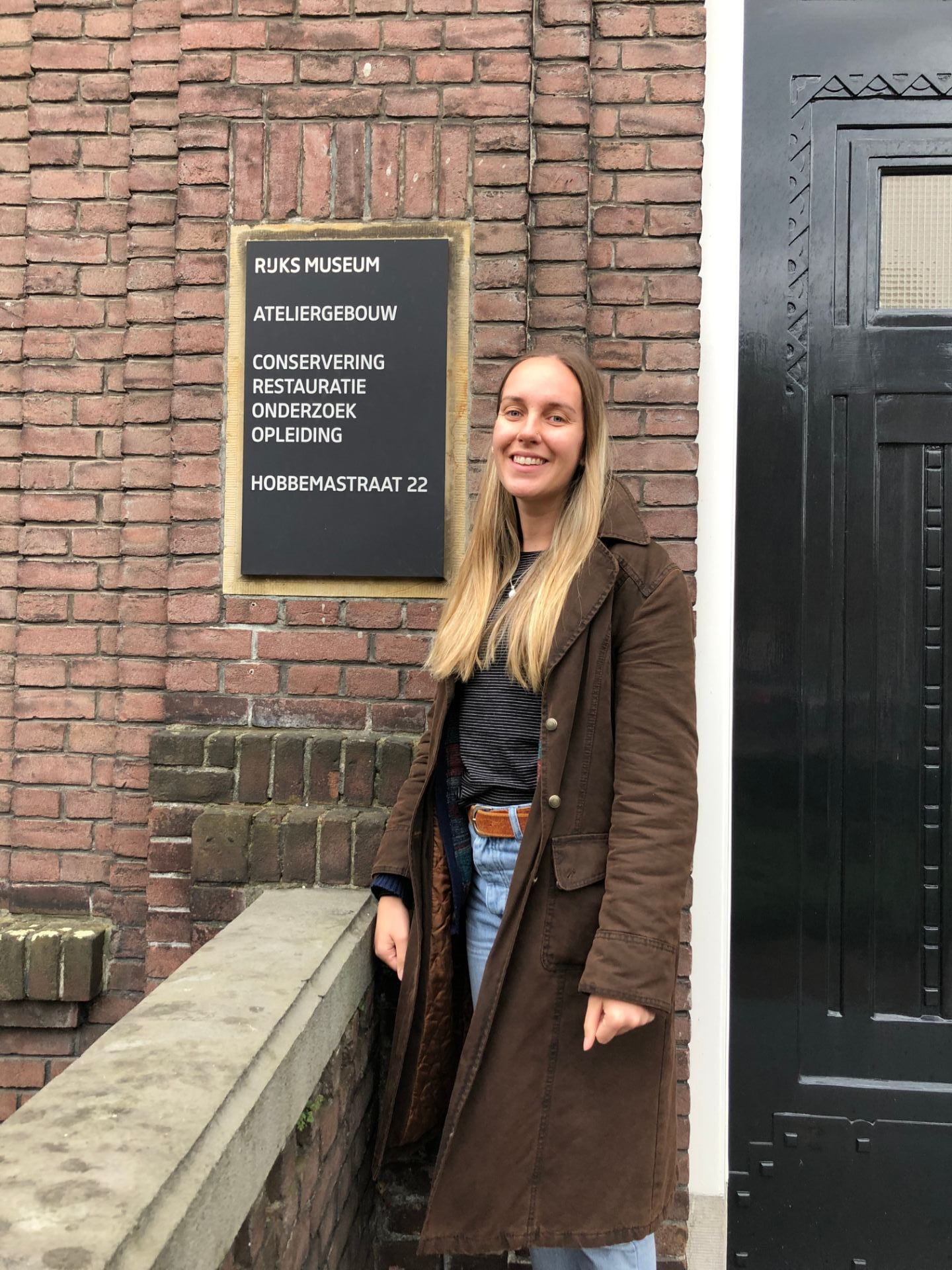
Three Months at the Rijksmuseum
Grimwade Centre student Laura Daenke is currently completing an internship in the Paper and Photo Department at the Rijksmuseum in Amsterdam. Here she talks to Isabella Walker about what she has learnt and observed over the course of her internship, and how her studies at the Grimwade prepared her for this experience.
Tell us a little about your conservation background and experience in the industry.
I completed a Bachelor of Heritage, Museums and Conservation at the University of Canberra. My degree gave me a holistic understanding of the heritage sector. I had a broad training in the conservation of many different materials, including paintings, paper and textiles. Originally, I was interested in the conservation of objects, such as ceramics and metals; however, most of the internships and work experience I completed during my undergraduate were in paper conservation. So I kind of just fell into specialising in paper conservation! But it definitely has been the specialisation for me – I love it!
I have been lucky enough to work in conservation studios around Australia, including the National Archives of Australia, the State Library of Queensland and Artlab Australia. Last year I decided to complete the Master of Cultural Materials Conservation here at the University of Melbourne in order to advance my studies and specialise in paper conservation.

What drew you to the Rijksmuseum as a host institution?
The internship was advertised online, and I was encouraged to apply for it by a previous supervisor of mine. To be completely honest, I didn’t think I would have a chance to land an internship at such a world-class museum. It just shows you have to shoot to score!
The Rijksmuseum collection is incredible. I am lucky enough to be working with the Rijksprentenkabinet (Print Room) collection, the largest museum collection of print and drawings in the Netherlands.

Tell us about your experience at the Rijksmuseum. What were some of the projects you have worked on?
I am currently in the last month of my three-month internship with the Paper and Photo Conservation Department. Thus far, I have had the opportunity to conduct conservation treatment of works of art on paper, to write condition reports, to install and de-install exhibitions, to assist with ongoing research projects and to prepare objects for loans, exhibition, handling and storage.
One of the major projects I have been working on has been the mounting and storage of a large acquisition consisting of nineteenth-century Japanese Kabuki theatre woodblock prints. Each print undergoes a thorough visual examination, followed by a written condition report. Some of the prints require minor conservation treatment, including the removal of old hinges and the repair of small tears and losses. The prints are inlayed with strips of Japanese tissue paper to create false margins. Inlaying works of art on paper ensures extra protection during handling; the artwork can be lifted by the inlay margin without touching the primary paper support.
My favourite treatment thus far has been the consolidation of flaking paint on a beautiful Indian miniature painting from the late sixteenth century. The treatment involved the application of gelatine to the flaking media with an extremely fine brush, conducted under microscopy. The treatment was completed in preparation for travel to Mumbai for the India and the Netherlands in the Age of Rembrandt exhibition, currently on display at the Chhatrapati Shivaji Maharaj Vastu Sangrahalaya (CSMVS).

How did your time studying at the Grimwade prepare you for this experience?
My training at the Grimwade Centre has equipped me with many valuable skills that have assisted me during this internship. One of these is the knowledge of emerging conservation techniques, such as the use of jelly-like gels in conservation. These are used to control the introduction of moisture to an object undergoing treatment, and provide a method of cleaning that is both localised and highly controlled. The paper and books conservation department at the Rijksmuseum is also introducing the use of rigid gels – made of polysaccharides, including gellan gum and agarose gel – for the removal of adhesives, residues and hinges on works of art on paper. I was first introduced, practically and theoretically, to gels in conservation during my training at the University of Melbourne. Equipped with this knowledge I was able to contribute to discussions about the use of gels and my experience with them in Australia.
Were there any aspects of conservation practice at the Rijksmuseum that surprised you?
The workshop is driven by exhibition preparation and the housing of newly acquired artworks. To my surprise, the conservators are rarely required to undertake highly interventive treatments in order to salvage artworks in poor condition. One reason for this is that the Rijksprentenkabinet collection is simply very well looked after: prints and drawings by master artists are in exquisite condition and have physically and aesthetically appropriate mounting and storage systems. Another reason for the lack of these major treatments is that the team is extremely busy cataloguing the hundreds of prints and drawings that the Rijksmuseum acquires every year. Every new acquisition first passes through the workshop, undergoing condition reporting and mounting, before going into storage.

What will take away from this experience? How will your time at the Rijksmuseum shape your future practice?
Thus far, my experience at the Rijksmuseum has been extremely positive. My education and training at the University of Melbourne, coupled with this three-month internship, has equipped me with new skills, knowledge and motivation to enter the workforce as a graduate paper conservator. The internship has been particularly interesting as it has given me an understanding of what the conservation profession looks like in Europe and at a high-profile cultural institution. After this experience, I feel enthusiastic about my future career in conservation. I now know that wherever I go in the future, I will not only continue to learn, but also contribute and share the skills I have mastered.
But not only will I return to Australia with many new skills, I will also return with new friendships! I have met so many incredibly friendly and intelligent conservators, who have all been so willing to share their skills. I feel extremely privileged to have worked with such passionate and talented people.
Cultural materials conservation is a small, yet truly global, industry, and the Grimwade Centre for Cultural Materials Conservation has strong connections to collecting institutions all over the world. For more information about the its international links, see the centre’s website.